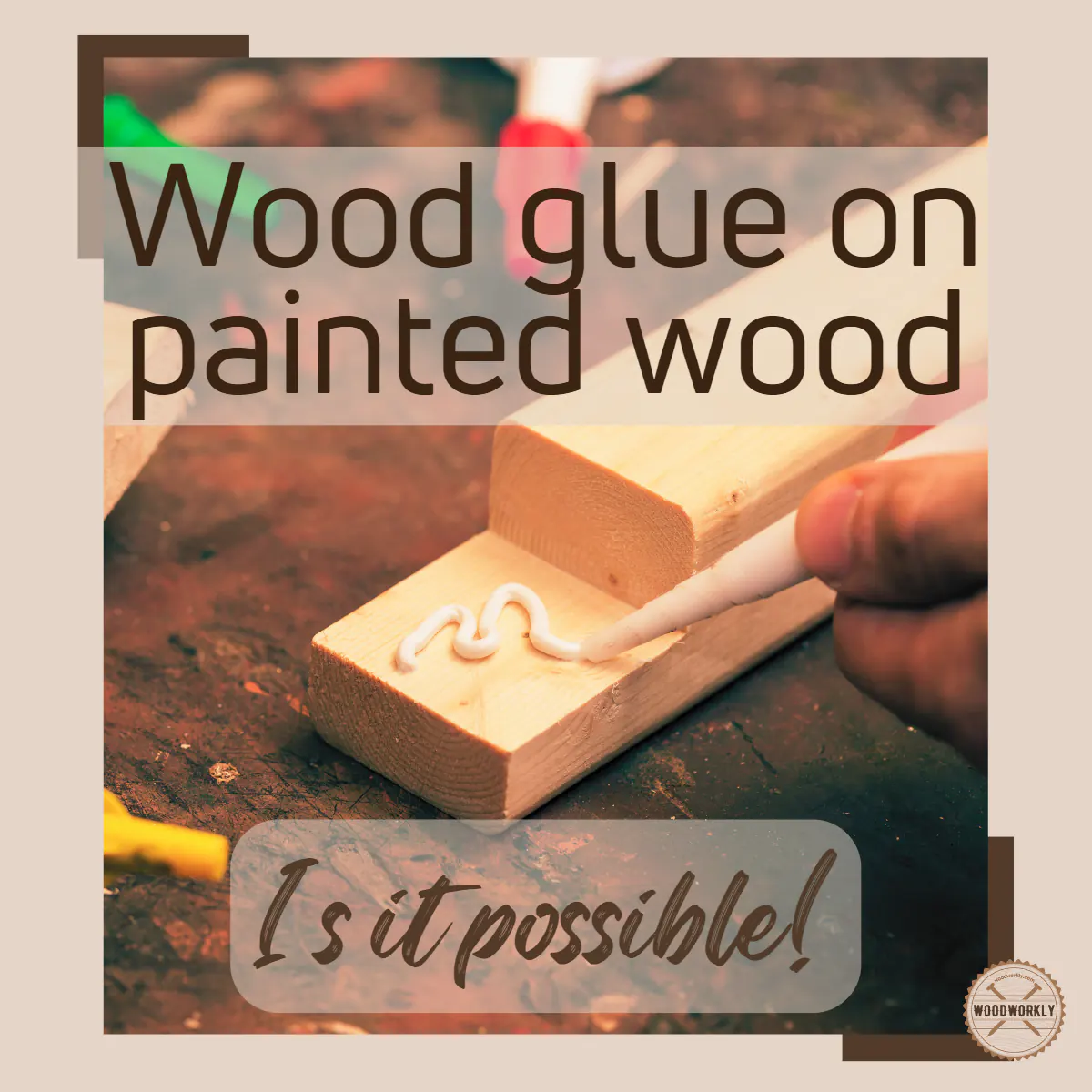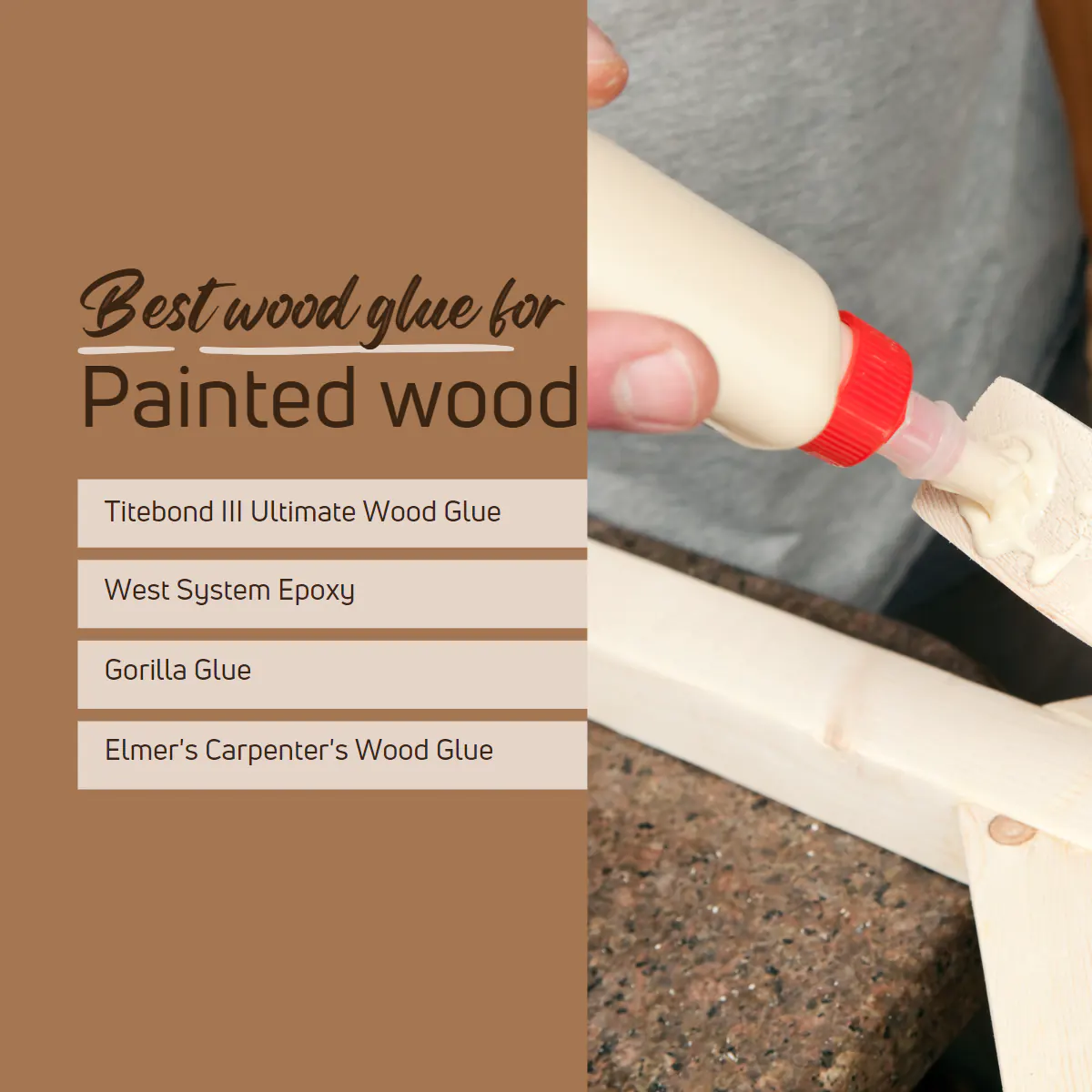When it comes to woodworking projects, knowing which materials work well together is crucial. One question that often comes up is, “Does wood glue bond to paint?” You might be wondering if wood glue is a suitable adhesive for painted surfaces. Well, let’s dive in and find out!
Wood glue is a versatile adhesive used to join pieces of wood together, but can it also bond effectively to painted surfaces? Understanding the compatibility of these materials is essential for successful projects. So, in this article, we’ll explore whether wood glue can adhere to paint and provide you with all the information you need.
Whether you’re a woodworking enthusiast or just starting out, knowing which materials work together can save you time and effort. So, let’s dig deeper into the world of wood glue and paint adhesion, and uncover the answers you’ve been seeking. Let’s get started!

Does Wood Glue Bond to Paint?
Wood glue is a common adhesive used in woodworking projects for its strong bonding properties. However, when it comes to bonding wood glue to paint, there are certain factors to consider. In this article, we will explore the compatibility of wood glue and paint, discussing whether or not they can form a reliable bond. Additionally, we will provide tips and insights on techniques to enhance adhesion between wood glue and painted surfaces.
1. Understanding Wood Glue
Wood glue, also known as carpenter’s glue or PVA glue, is a popular adhesive used in woodworking projects for its excellent bonding strength and versatility. It is specifically designed to bond porous materials like wood, making it ideal for joining wooden pieces together. Wood glue works by penetrating the wood fibers and creating a bond as it dries. This adhesive is easy to apply, water-soluble, and dries clear, making it a preferred choice for many woodworking enthusiasts.
However, it is essential to note that wood glue is primarily formulated for bonding wood surfaces together. While it can adhere to various porous materials, its effectiveness on non-porous surfaces like paint may vary. The key to achieving a strong bond between wood glue and paint lies in the preparation and compatibility of the materials.
2. Factors Affecting the Bonding of Wood Glue to Paint
When it comes to bonding wood glue to paint, several factors come into play. These factors can affect the adhesion and durability of the bond between the two materials. Here are a few important factors to consider:
Surface Preparation:
Proper surface preparation is crucial for achieving a strong bond between wood glue and paint. The paint surface should be clean, dry, and free from any contaminants such as dust, grease, or wax. Additionally, roughening the painted surface slightly with sandpaper can help improve the bond by increasing the surface area for the wood glue to adhere to.
Type of Paint:
The type of paint used can significantly influence the bonding properties with wood glue. Some paints, such as acrylic and latex paints, are more porous and flexible, making them relatively easier to bond with wood glue. On the other hand, oil-based paints and glossy finishes may have a smoother and less porous surface, making adhesion more challenging.
Compatibility:
The compatibility between the wood glue and the paint should be considered to ensure a strong bond. It is recommended to use a paint that is compatible with the specific type of wood glue being used. Testing the bond on a small, inconspicuous area before applying it to the entire project is a wise approach.
3. Enhancing Adhesion between Wood Glue and Paint
While achieving a reliable bond between wood glue and paint may present challenges, there are techniques and tips that can enhance adhesion. Here are a few strategies to improve the bond:
Sanding:
Before applying wood glue, lightly sanding the painted surface can improve the adhesion by creating a rougher texture for the glue to grip onto. Be cautious not to sand too aggressively and remove too much of the paint layer.
Priming:
Using a primer specifically designed for paint adhesion can enhance the bond between wood glue and paint. The primer creates a suitable surface for the glue to adhere to, increasing the overall strength of the bond.
Scuffing:
Scuffing the painted surface using sandpaper or a scotch-brite pad helps to break the glossy finish and provide a better surface for the wood glue to cling to. This technique is especially useful for bonding with glossy or oil-based paints.
In conclusion, while wood glue is primarily designed for bonding wood, it can be used to adhere to painted surfaces with careful consideration and preparation. By understanding the factors that affect adhesion and employing appropriate techniques to enhance the bond, you can achieve a reliable and durable connection between wood glue and paint. Remember to test the bond in a small area before applying it to the entire project, and always follow the manufacturer’s instructions for the best results. Happy woodworking!
Key Takeaways: Does Wood Glue Bond to Paint?
- Wood glue does not bond well to paint.
- Paint creates a smooth surface that makes it difficult for wood glue to adhere properly.
- For a strong bond, it’s recommended to remove the paint before using wood glue.
- Scraping, sanding, or using a paint remover can help remove the paint effectively.
- Once the paint is removed, apply wood glue to the bare wood surface for the best results.
Frequently Asked Questions
When it comes to woodworking projects, understanding how different materials bond together is crucial. In this article, we will address some common questions about the bond between wood glue and paint.
1. Can wood glue be used to bond two painted surfaces together?
While wood glue provides a strong bond on bare wood surfaces, it may not adhere well to paint. The paint creates a barrier that prevents the wood glue from directly bonding with the surface. It’s recommended to use other adhesive options specifically designed for bonding painted surfaces.
When trying to bond painted surfaces, it’s best to use adhesive products such as epoxy or super glue. These adhesives are formulated to work effectively on smooth and painted surfaces, creating a secure bond between the two materials.
2. Is there a special type of wood glue for bonding painted wood?
Yes, there are wood glues available that are specifically designed to bond painted wood. These glues have properties that allow them to adhere well to painted surfaces, creating a strong bond. They often contain additives that enhance their bonding capabilities on painted surfaces.
When selecting a wood glue for painted wood, look for products labeled as “paintable” or specifically mention their compatibility with painted surfaces. Reading the product instructions and recommendations can also provide valuable guidance on which wood glues work best for bonding painted wood.
3. What are some factors that affect the bond between wood glue and paint?
Several factors can influence the bond between wood glue and paint. The type and quality of the paint, as well as its thickness and smoothness, play a role in how well the glue adheres. Rough or textured paints may not provide an ideal surface for bonding.
Additionally, the type of wood and its condition can affect the bond. Porous or oily woods might hinder the adhesive’s effectiveness. Proper surface preparation, such as sanding the painted surface lightly to create texture, can improve the bond between wood glue and paint.
4. Can you paint over wood glue?
Wood glue is not intended as a surface coating or paint substitute. It is primarily used for bonding wood joints or pieces together. While wood glue dries clear, it may not have the same finish as paint and can have a different texture.
If you need to paint over wood glue, it’s recommended to apply a layer of primer or a suitable paint undercoat before applying the final paint. This will help create a uniform surface and ensure a smoother and more consistent finish.
5. How can you remove wood glue from a painted surface?
If you accidentally get wood glue on a painted surface, it’s important to act quickly before the glue dries. Use a damp cloth or sponge to gently wipe away the excess glue, being careful not to spread it further. It’s crucial to avoid rubbing or scrubbing the glue, as this may spread it and damage the paint.
If the wood glue has already dried, you can try carefully scraping it off with a plastic scraper or using a specialized adhesive remover. Always perform a test in an inconspicuous area first to ensure the paint won’t be affected or damaged by the removal process.

Summary
So, does wood glue bond to paint? The answer is both yes and no. While wood glue is designed to bond to wood, it may not adhere well to paint due to the smooth surface. However, roughing up the paint or using a specific type of wood glue called epoxy can help create a stronger bond. It’s always a good idea to do a test before embarking on any important project to ensure the glue and paint will work together effectively.
In conclusion, it’s possible for wood glue to bond to paint, but it may require a few extra steps. By preparing the surface properly and using the right type of glue, you can increase the chances of a successful bond. Remember to follow the manufacturer’s instructions and test the bond before moving forward with your project.
